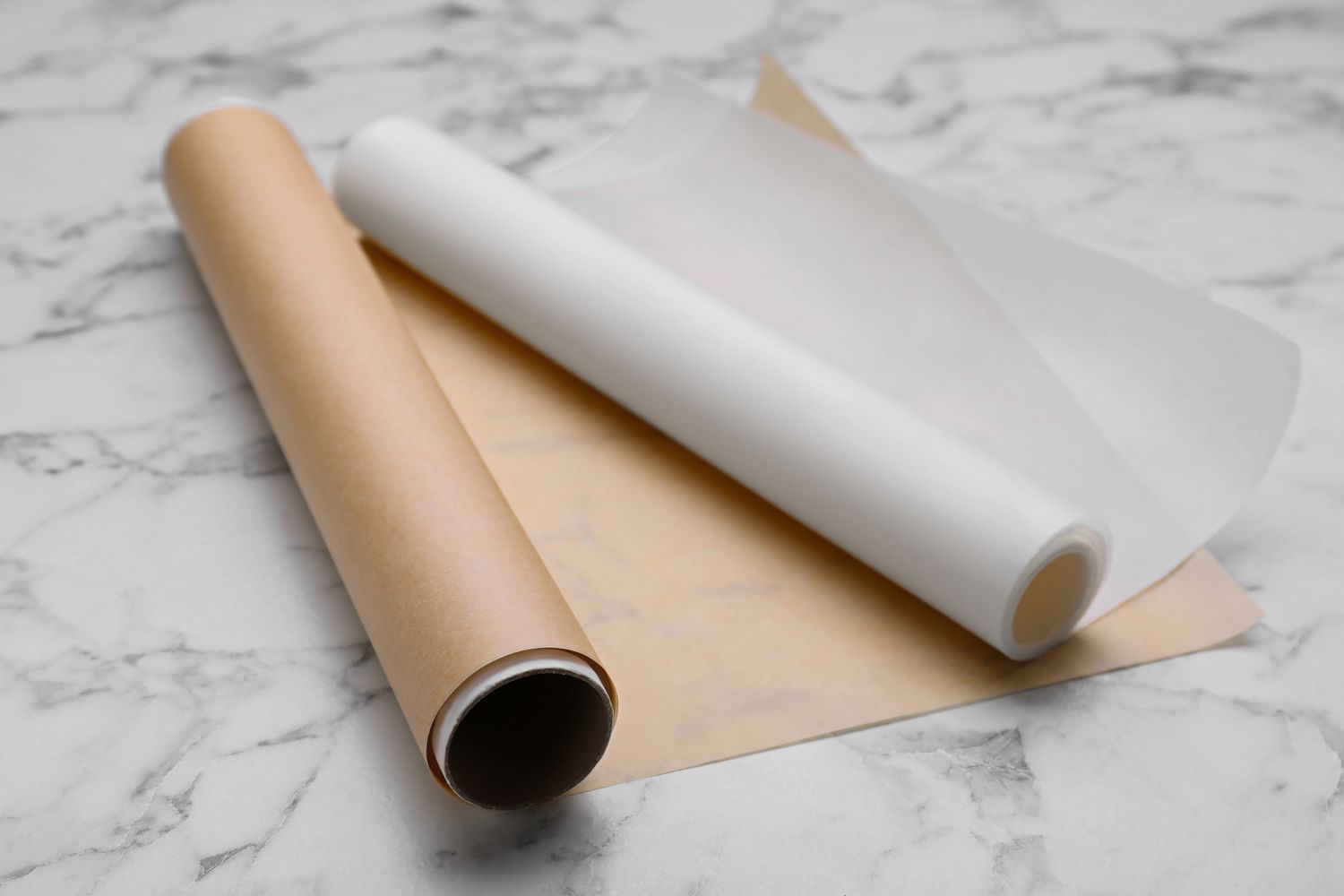
Parchment paper is a versatile tool in any kitchen, making cooking and baking easier and more efficient. However, with various options available, it can be challenging to know which type is best for your specific cooking needs. This guide will help you understand the different types of parchment paper, their uses, and how to choose the right one for your culinary tasks.
What is Parchment Paper?
Parchment paper is a semi-transparent, heat-resistant paper that is often used in baking and cooking. It is treated with acid to give it a non-stick surface, making it ideal for lining baking sheets, wrapping food, and more. Unlike wax paper, which can melt and is not suitable for high temperatures, parchment paper can withstand heat up to 420°F (215°C) without burning or sticking.
Types of Parchment Paper
When shopping for parchment paper, you may encounter several different types. Understanding these variations will help you select the one that best suits your needs.
1. Unbleached vs. Bleached Parchment Paper
Parchment paper comes in two primary forms: unbleached and bleached.
- Unbleached Parchment Paper: This type retains its natural brown color and is often considered more environmentally friendly. It is free from any chemical bleaching agents, making it a healthier choice for cooking.
- Bleached Parchment Paper: This version is white and has been treated with chemicals to achieve its bright appearance. While it performs similarly to unbleached parchment paper, some consumers prefer to avoid it due to concerns over chemical exposure.
2. Pre-Cut vs. Roll Parchment Paper
Parchment paper is available in two common formats: pre-cut sheets and rolls.
- Pre-Cut Sheets: These are convenient and ready to use, making them perfect for quick baking tasks. They come in standard sizes that fit most baking sheets, reducing preparation time.
- Rolls: Rolls offer more versatility as you can cut the paper to any size you need. This is especially useful for larger baking sheets or unique shapes. However, using a roll may require a little extra effort to measure and cut.
3. Silicone-Coated Parchment Paper
Some parchment papers are coated with silicone, enhancing their non-stick properties. Silicone-coated parchment paper can withstand higher temperatures and is ideal for recipes that require longer baking times. It is also reusable, making it a more sustainable option.
Consider Your Cooking Needs
When choosing parchment paper, it’s essential to consider how you plan to use it. Here are some common applications and the type of parchment paper that works best for each.
1. Baking Cookies and Pastries
For baking cookies, pastries, and other treats, standard unbleached or bleached parchment paper works well. It provides a non-stick surface, ensuring that your baked goods release easily. If you frequently bake at high temperatures, consider using silicone-coated parchment paper for added durability.
2. Roasting Vegetables
When roasting vegetables, parchment paper can help prevent sticking and make cleanup easier. Unbleached parchment paper is a great choice here, as it won’t impart any unwanted flavors. You can also use it to line your roasting pan for easy removal of your veggies.
3. En Papillote Cooking
The technique of cooking “en papillote,” or in a pouch, involves wrapping food in parchment paper to steam it. For this method, any type of parchment paper will work. However, silicone-coated options can withstand the moisture and heat better, ensuring even cooking.
4. Lining Cake Pans
Lining cake pans with parchment paper helps prevent sticking and ensures a smooth release. Pre-cut sheets designed for round cake pans can save time and effort. Make sure to choose a type that can endure the baking temperature of your cake recipe.
5. Crafting and Food Wrapping
Parchment paper is also useful for crafting or wrapping food items. If you need a non-toxic option for wrapping sandwiches or snacks, unbleached parchment paper is an excellent choice.
Key Features to Look For
When selecting parchment paper, consider the following features to ensure you choose the right one for your cooking needs:
1. Heat Resistance
Always check the packaging for the maximum heat tolerance of the parchment paper. Most parchment papers can withstand temperatures up to 420°F (215°C), but some silicone-coated varieties can handle even higher temperatures.
2. Non-Stick Properties
Look for parchment paper that specifically mentions its non-stick capabilities. This feature is crucial for baking, as it ensures that your food will not stick to the paper, allowing for easy removal.
3. Size Options
Consider the size of the parchment paper. If you often bake large batches or unique-shaped items, having a roll or larger sheets can be more convenient. Pre-cut sheets are ideal for standard baking tasks.
4. Environmental Impact
If you’re concerned about sustainability, opt for unbleached parchment paper or brands that use eco-friendly materials. Some companies produce parchment paper from recycled materials, making them a great choice for eco-conscious cooks.
Storage and Maintenance Tips
Once you’ve chosen the right parchment paper, proper storage and maintenance will help you get the most out of it.
1. Keep It Dry
Store parchment paper in a cool, dry place to prevent it from absorbing moisture. If it gets damp, it may not perform as well when baking or cooking.
2. Avoid Direct Sunlight
Prolonged exposure to sunlight can degrade the quality of parchment paper. Store it in a cabinet or drawer to keep it in optimal condition.
3. Use Only Once or Twice
While some silicone-coated parchment papers are reusable, most standard parchment papers are meant for single use. If you choose to reuse, ensure they are clean and free from any food residue.
Conclusion
Choosing the right parchment paper for your cooking needs can significantly enhance your culinary experience. By understanding the different types available and considering your specific applications, you can select the perfect parchment paper to make baking and cooking easier and more enjoyable. Whether you opt for unbleached sheets, silicone-coated rolls, or pre-cut options, the right parchment paper will help you achieve delicious results and simplify cleanup.






